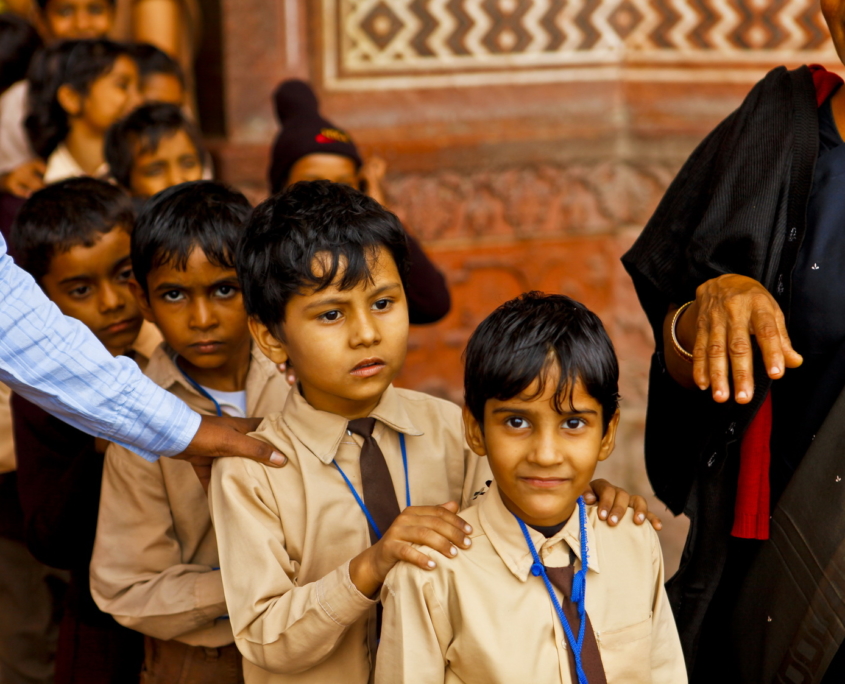Quality and Inclusive Education in India: An Update on SDG 4
 The fourth Sustainable Development Goal laid out by the U.N. is “Quality Education.” This SDG aims to “ensure inclusive and equitable quality education and promote lifelong learning opportunities for all.” India has made remarkable progress in increasing the enrollment of students for primary education over the last decade. Various schemes, like Sarva Shiksha Abhiyan, have played a major role in universalizing education in India. The Right to Education Act, which makes education free and compulsory for children between the ages of 6 and 14 years under Article 21 (A) of the Constitution of India has made education in India a fundamental right. In India, Kerala is the best-performing state, whereas Bihar is the worst performing state with respect to the index score of the fourth Sustainable Development Goal.
The fourth Sustainable Development Goal laid out by the U.N. is “Quality Education.” This SDG aims to “ensure inclusive and equitable quality education and promote lifelong learning opportunities for all.” India has made remarkable progress in increasing the enrollment of students for primary education over the last decade. Various schemes, like Sarva Shiksha Abhiyan, have played a major role in universalizing education in India. The Right to Education Act, which makes education free and compulsory for children between the ages of 6 and 14 years under Article 21 (A) of the Constitution of India has made education in India a fundamental right. In India, Kerala is the best-performing state, whereas Bihar is the worst performing state with respect to the index score of the fourth Sustainable Development Goal.
Efforts to Create Quality and Inclusive Education in India
- A mid-day meal scheme was launched in India for students in government and government-aided primary schools to increase enrollment, retention and attendance along with improving children’s nutritional statuses. It is a centrally sponsored scheme that was launched on August 15, 1995, to improve education in India. In 2008, India extended the benefits of the scheme to all areas across the country.
- Beti Bachao Beti Padhao (save the daughter, educate the daughter) is a 2015 initiative undertaken to primarily spread awareness about the current state of girls’ education in India. In the mass communication campaign, Beti Bachao Beti Padhao highlighted education as a tool for women’s empowerment and ensuring a bright future for girls. The objectives of the scheme also include ensuring the survival and protection of girls and eliminating gender-biased sex selection.
- Over the past two decades, the Government of India has launched various schemes to ameliorate the predicament of gender and social gaps in education. The Sarva Shiksha Abhiyan (Education for All Movement) program was launched in 2000-2001 to make education universally accessible and to bridge the gap in education between gender and social categories. The intervention included investment in school infrastructure, such as opening new schools, construction of additional classrooms, toilets and drinking water facilities, among other measures, that would result in improvement of education outcomes.
- The COVID-19 pandemic has forced education to shift online in India. The shift to the online medium of learning is challenging for students all across the country. But, the effect of this crisis has had the worst implications on poverty-stricken people in remote villages who do not have internet connectivity, electricity or resources to access quality education.
Looking Ahead
The implementation of such schemes by the central government has led to significant progress in achieving universal primary education enrollment for both girls and boys in India. With an increase in inclusive education in India, it is also imperative to prioritize universal quality education for all students. With an increase in enrollment rates for primary education, there is a need to overcome issues such as absenteeism of teachers, lack of proper infrastructure, unsafe drinking water and improper sanitation facilities.
The COVID-19 pandemic disproportionately affects the marginalized communities and economically weaker sections of society by making education inaccessible. The need of the hour is to invest in education by making it inclusive and accessible while bridging the gap in education outcomes that arises due to inequality of income, ensuring quality education for all.
– Anandita Bardia
Photo: Flickr
